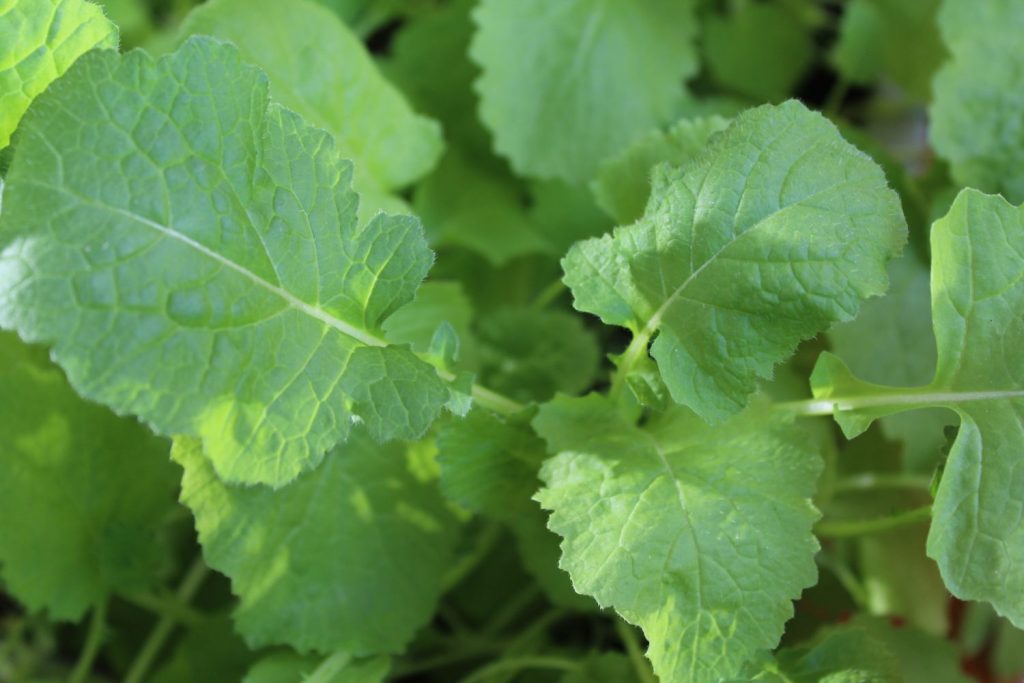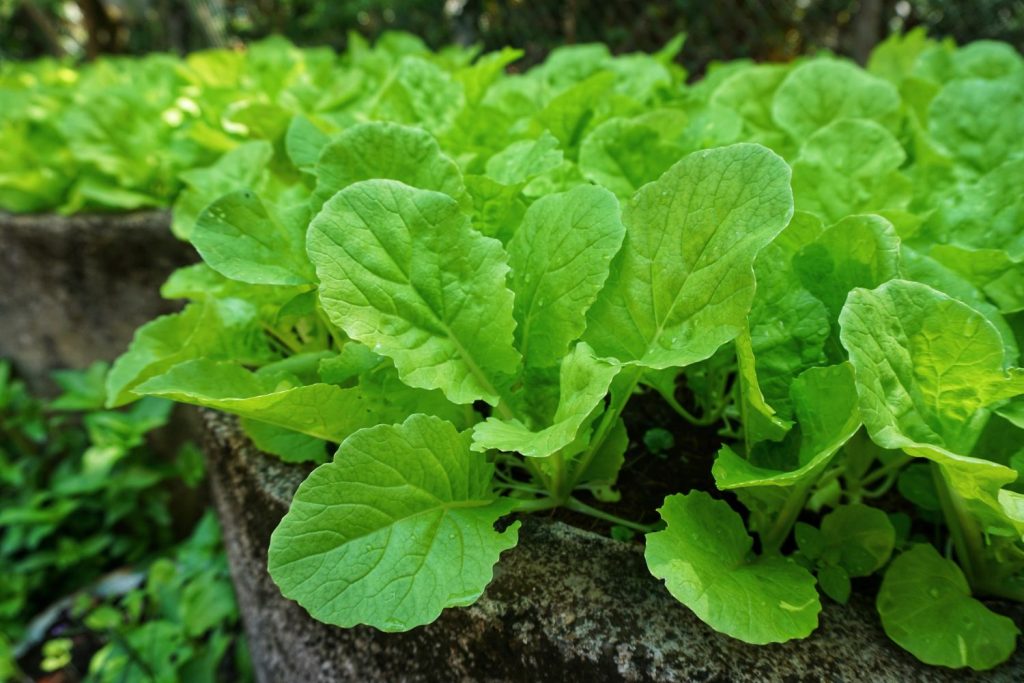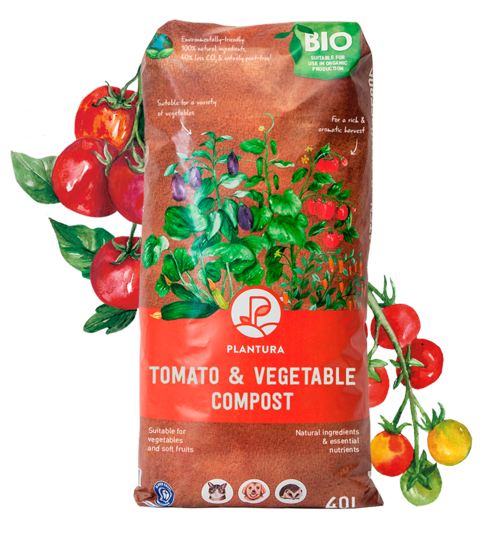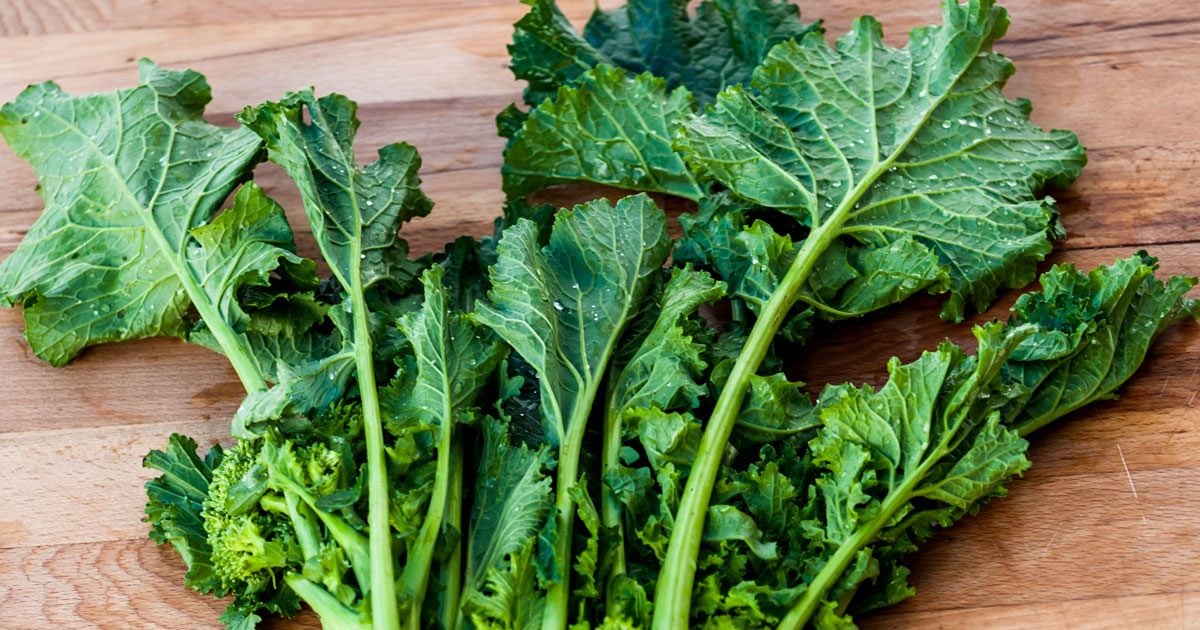Having worked as a journalist for many years I studied horticulture and now work as a professional gardener. As a kitchen gardener, I grow a lot of different fruits, vegetables, and herbs for chefs in the north of England. I love writing and gardening, and I love growing food and trying to get other people to go outside and do the same. Favourite fruit: Apples and Raspberries Favourite vegetables: Beetroot, celeriac, parsnip and broad beans.
Turnip greens are the leafy green tops of turnips and are very high in nutrients. Find out all about turnips tops, including how to grow this highly under-rated crop.
Turnip greens (Brassica rapa var. esculenta) are a crop that gets little attention but is good for you because it is high in nutrients and low in calories. That’s right, they’re easy to grow. Keep reading to learn how to take care of and pick turnip tops.
Turnip leaves are one of those underappreciated parts of vegetables that often get overlooked or discarded. However turnip greens are edible nutritious and can add flavor and texture to many dishes. In this article, we’ll take a closer look at what turnip leaves look like as well as how to cook with them.
Turnip Leaf Appearance
Turnip leaves sprout out from the top of the turnip root as a rosette of leaves. They have an appearance similar to other leafy greens like kale or collard greens. The leaves are long, broad and have a wrinkled texture with serrated edges. The color ranges from dark to light green depending on the variety. The leaves grow on light green stems coming from the turnip bulb. Turnip greens can grow quite large, with leaves reaching up to 12 inches long. However, they are often harvested when still young and tender at around 5-6 inches in length.
When selecting turnips with the greens still attached, look for ones with fresh, perky green leaves. Avoid any bunches with yellow or wilted leaves as these are past their prime The turnip bulbs themselves can vary in size, shape, and color but are commonly white and round
Cooking With Turnip Greens
While the turnip bulb is the more commonly eaten part, the leafy greens are also edible and nutritious. Turnip greens have a slightly spicy, peppery flavor that pairs well with salty and fatty ingredients like bacon or ham. They can be eaten raw when very young and tender but are more commonly cooked.
Turnip greens need longer cooking than more delicate greens to break down their fibrous texture. Methods like braising sauteing or simmering in soups are best. Chopped turnip greens can be used in place of kale or collards in most recipes. They work well in typical Southern-style dishes served with pot likker or pepper sauce and make an excellent addition to stews, tacos, pastas and more.
Health Benefits
While not as trendy as kale or spinach, turnip greens are just as healthy. They are very low in calories but packed with vitamins, minerals and powerful antioxidants. Turnip greens are an excellent source of vitamins A, C, K, folate and manganese. They also contain high amounts of vitamin E, calcium, potassium, and iron. The antioxidants in turnip greens help fight inflammation and oxidative stress. The combination of nutrients makes turnip greens a superfood that may help lower cholesterol, blood pressure and diabetes risk.
How to Store Turnip Greens
To extend their shelf life, leave turnip greens attached to the bulb until ready to use. Store turnips with greens in a plastic bag in the fridge for 3-5 days maximum. Once removed from the turnip, greens will start to wilt quickly so plan to cook them within a day or two. For longer storage, blanch the greens then freeze for later use in soups or stews.
With their impressive nutrient content and bold, peppery flavor, turnip greens deserve a place beside kale and spinach in the leafy green pantheon. They can take your soups, stews, tacos, and other dishes to the next level. Next time you buy turnips, don’t discard those leafy greens – put them to delicious use instead! Let us know your favorite ways to cook with turnip greens in the comments.
Turnip greens: origins and characteristics
Turnip greens are leafy greens that look similar to the tops of the common turnip (Brassica rapa subsp. rapa) and belong to the cruciferous plant family (Brassicaceae). The leafy tops are edible and are used in many cuisines around the globe. For example, turnip greens are a common side dish during the colder months in the Southern United States.
Northern and Central Europe are where the turnip comes from. This annual root vegetable has been grown and eaten there for hundreds of years. There are two ways to grow turnip greens. Firstly, they can be grown only for the greens. Here, the leafy vegetable is harvested along with the stalk before the turnip root has fully developed. Or the turnip tops can be kept and cooked when harvesting the turnip roots.
Turnip greens are the leafy rosette part that grows above ground from the turnip root. The rosettes have long, pinnate leaves with a serrated edge and are dark green. The stems are light green and the leaves can grow up to 30 cm long. The leaves taste peppery, and the taste gets stronger in the fall and winter. People grow this plant for its leaves, which can be eaten. If you let it flower, though, it will produce yellow cruciferous flowers that bees love.

How to grow turnip greens and care tips
You plant turnip greens the same way you plant regular turnips, but you plant them closer together and a little earlier because you don’t want the big roots. From January to March, turnip green seeds can be planted in a greenhouse. In March and April, they can be planted outside. Late plantings can be done in a cold frame in September and October so that crops can be picked all winter long. Turnip seeds can grow in temperatures as low as 4 °C, but 18 to 20 °C is best. They will sprout in 7 to 14 days at that temperature.

Sow turnip green seeds thinly in a 1cm-deep drill. Thin the seedlings to 5-10cm apart as they grow. You can use the thinned-out turnip greens in the kitchen, so make sure to keep them. Aim for a closer spacing than you would with regular turnips. The root will grow less because of the closer spacing, and the leaves will be longer. It doesn’t matter how cold it is in the spring—the plants grow quickly. You can harvest them just 6 weeks after planting.

Water the seeds regularly after sowing and regularly remove weeds to reduce competition and encourage quick leaf growth. Hoe regularly between the rows to eliminate weed pressure. Turnip greens are light feeders and due to their fast growth, do not need additional fertilisation.
Turnip greens are perfectly suited to growing in raised beds. Fill your raised beds with good vegetable compost if you want to grow turnip greens in them. Our organic tomato from Plantura

- Great for tomatoes
- For strong
- Peat-free & organic soil: CO2-saving composition
How to Grow Lots of Turnips from Seed to Harvest
What do turnips look like?
Turnips are round, root vegetables with a white bottom and a purple, red, or greenish upper part. The taproot generally has a crisp, white flesh inside. Root vegetables like turnips are nutritious staples boasting versatility in the kitchen and a host of health benefits.
Are turnips high in sugar?
Turnips are a cruciferous vegetable that contain about 5 grams of natural sugars per 1 cup of the cooked bulb. Both turnip bulbs and turnip greens can be consumed. Turnips are not considered a high sugar vegetable, especially when compared to other more commonly eaten vegetables like peas, onions, and sweet corn. The sugar that is consumed via vegetables and fruits is not the same as consuming refined sugar from soda, candy, or condiments. Turnips are a health-promoting root vegetable rich in fiber, vitamins, minerals, and other beneficial plant compounds.
How big do turnip leaves get?
Full-size turnip leaves are a foot long and six inches wide. The leaves will cook down a surprising amount, so it takes a several large handfuls of leaves to make a potful or “mess of greens.”
How do you know if a turnip is mature?
Leaf development: Groups of leaves form a dense rosette. Root bulking: The turnip bulb expands and takes shape. Maturity: Leaves are lush and the root reaches full size. Harvesting turnips is a delicate balance of timing and technique. Mature turnips boast a firm texture and a sweet, slightly spicy flavor.
- The Ultimate Guide to Growing Strawberries in Raised Beds - August 8, 2025
- No-Dig Garden Beds: The Easiest Way to Grow a Beautiful Garden - August 6, 2025
- How to Protect and Preserve Wood for Raised Garden Beds - August 6, 2025

